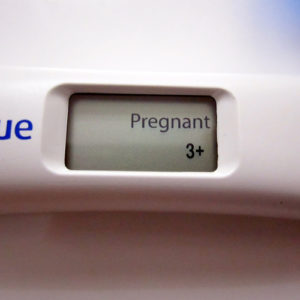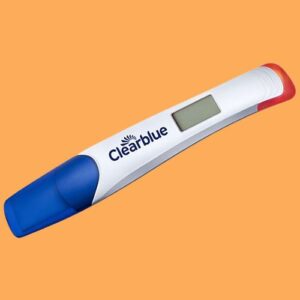If you want to become pregnant or (or even avoid becoming pregnant), knowing when you ovulate is extremely important. Ovulation is noted as the time in which the body releases a mature egg that can then be fertilised. Your most fertile days are around this time of the month. This is when you are ovulating.
You already know why you want to know when your body is ovulating, but now it’s coming up with how to know the time you’re ovulating. Thankfully, women have a ton of choices when it comes to knowing when they’re ovulating – some free; some are a bit more expensive.
Use An Ovulation Calculator
If you want a free method to learn what your ovulation time frame is, an ovulation calculator can give you a basic idea. All you need to do is type in some general cycle information (last period start date, average cycle length, etc.).
The calculator will provide you with an estimated ovulation date. The calculator gives you a general idea of when the process occurs, but it’s only statistical averages and isn’t a true representation of what your situation is.
We have a very simple ovulation calculator which can be found on the Zoom Baby website.
- Pros – Free to use
- Cons – It can be inaccurate because it’s based on statistical averages
Ovulation Tests
Ovulation tests cost a little bit of money and use urine to give you a general idea of your ovulation date. Many women who want to become pregnant use these tests. They’ll sample the body’s unique hormone composition to find out when the ovulation is going to happen. This is done by looking at the hormone that determines ovulation. When the threshold sensitivity level hits 20 to 25 miu/ml LH, the test turns positive, and ovulation can occur between 24 and 48 hours.
At Zoom Baby we offer various types of Ovulation Tests. Our most popular ones are a simple ovulation test strip which is dipped into a urine sample and a result is recorded. These are the simplest type of Ovulation Test and also the cheapest. These tests offer up to 99% reliability in predicting ovulation and can be purchased as Regular and Extra-Sensitive forms. They offer a simple and easy method of finding out when you are ovulating.
One step up from test strips are ovulation midstreams. These are similar in design to a conventional pregnancy test. You just take the test out of the wrapper and wee on it! Results appear moments later.
- Pros – They don’t cost very much and are reliable.
- Cons – Short notice of ovulation timeframe (usually 24 to 48 hours).
Track Your Basal Body Temperature (BBT)
Another way to track your ovulation is by keeping tabs on your basal body temperature (BBT). Your BBT is your body’s temperature at rest, and it typically rises slightly after ovulation. By taking your temperature each morning before getting out of bed and recording it on a chart, you can detect the shift in temperature that signals ovulation. This method requires some commitment, as you’ll need to take your temperature at the same time every day and record it accurately.
Ferning Microscopes
There’s also the use of saliva-based ovulation tests like the Maybe Baby Saliva Ovulation Tester which will tell you when you are ovulating.
These products detect the rise in oestrogen that takes place right before ovulation. A rise in saliva salinity is often accompanied by the rise in oestrogen and is noted by testing a sample of the saliva under the microscope. When the rise of oestrogen hits zenith, the sample will result in a ferning pattern.
The Pros and Cons of Using a Ferning Microscope
Pros
- Saliva-based ovulation tests are non-invasive and easy to use.
- The test is based on the rise in oestrogen which is a reliable indicator of ovulation
- The ferning pattern is easy to identify and gives a clear indication of ovulation.
- Ferning microscopes are relatively affordable and can be reused multiple times.
Cons
- Saliva-based ovulation tests may not be suitable for everyone as some women may have difficulty producing enough saliva for the test.
- The test may not be as accurate as other methods such as ultrasound or blood tests.
- The interpretation of the ferning pattern may vary depending on the user’s experience.
- The test may not work for women who have irregular menstrual cycles or hormonal imbalances.
Electronic Fertility Monitor
Electronic fertility monitors are noted as being the best of the best for ovulation prediction. They offer unmistakable results and provide you with more notice of when ovulation is set to occur. An electronic fertility monitor works by figuring out what the body’s hormonal composition is. It provides you with precise predictions about your fertility status, letting you know when the best days to get pregnant are.
We recommend the Clearblue Advanced Fertility Monitor as the being the easiest and most reliable monitor on the market.
- Pros – Best ovulation predictor, understandable results and more notice about the ovulation timeframe.
- Cons – Cost
As you see, there are all kinds of ways to determine when your ovulation date is about to occur. If you want to conceive, don’t just guess when your ovulation date is. Use any of the above methods to know when you’re about to ovulate.
Use A Fertility App On Your Phone
If you have a smartphone you might want to try one of the numerous fertility apps that have appeared in the last couple of year. Some of the more popular apps include:
Groove – this popular app uses advanced algorithms to predict your upcoming periods with accuracy. This allows to to discover patterns and know what to expect when it comes to your fertility. The app is available for both Apple and Android devices.
Clue – Period & Health Tracker allows you to track your period and health cycles to keep all aspects of your health and fitness in check. The app can send you personalised reminders about your period, PMS, ovulation, and fertility.
My Cycles is an Android app that can help you track the beginning of your cycle, your period, fertile window and ovulation day.
Ovulation Tracking Apps: A Modern Solution
As technology continues to advance, ovulation tracking apps have become an increasingly popular and convenient option for women trying to conceive or avoid pregnancy. These apps harness the power of your smartphone to provide personalised ovulation predictions based on your menstrual cycle data. Many offer additional features like fertility calendars, symptom tracking, and even tips for boosting fertility.
The convenience of having all this information at your fingertips can be a game-changer. Plus, many apps sync across devices so you and your partner can stay on the same page. While not a substitute for medical advice, ovulation apps are an affordable and user-friendly way to gain valuable insights into your cycle.
Photo credit; “Flowers” by Anthony Cunningham for Zoom Baby
Zoom Baby is a leading supplier of Pregnancy Tests and Ovulation Test Kits





